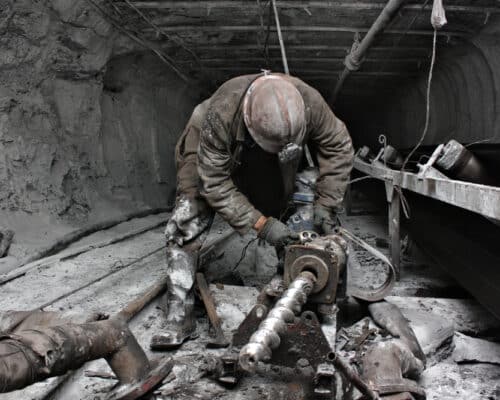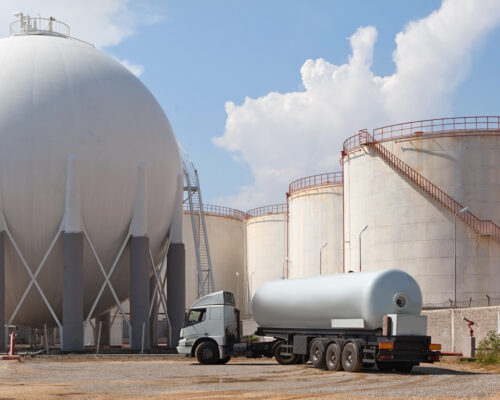Natural Gas
Japan’s Natural Gas Dependence: A Liability For the G7
Japan imports over 90% of its natural gas. As a result, it is reliant on the global LNG market and current events to dictate supply and energy costs. This is a liability that was highlighted in 2022 due to the country's dependence on Russian natural gas. Developing a robust renewable energy grid is the only viable long-term solution.
Oil Spill in the Philippines Implicates San Miguel Corporation
A major oil spill in the Philippines raises concerns over a corporate giant’s refusal to accept responsibility for the disaster. It also raises concerns over its dismal environmental record due to liquefied natural gas (LNG) development. The government is waffling, and the environment, local residents and fisherfolk are suffering.
Major LNG Liquefaction Projects 2023-2027
Global LNG capacity is set to increase by 35% by 2027, ushering in a new round of carbon emissions-intensive LNG projects. However, the world needs fewer fossil fuel project developments, not more, to reach net-zero by 2050.

The Future of Natural Gas In Asia
A recent ERIA-backed workshop calls for more natural gas usage in Asia until at least 2050. However, energy economics, long-term economic stability and climate mitigation dynamics throw doubt on those conclusions.
The Power Sector in Bangladesh Is Slowing Its Economic Growth
Bangladesh's energy crisis rocked the country in the second half of 2022. Brought on by record-high LNG prices, the country – which is heavily reliant on natural gas – had to limit local energy consumption. Rolling blackouts, power-shedding and other energy-saving measures have been significant roadblocks for the country's growing manufacturing sector.

China’s Fossil Fuel Addiction and the Green Transition
China's renewables development leads the world by a more than a two-to-one ratio, but its fossil fuel usage still accounts for more than 50% of its power production needs, creating the world’s highest GHG emissions.
Global LNG Outlook 2023: Is There a Future for LNG?
Global LNG markets will remain volatile for the rest of the decade, negatively impacting Southeast Asia. The region's carbon emissions-intensive gas-to-power build-out exacerbates the problem. With a myriad of problems from LNG and gas-to-power usage, energy economics dictate that renewables development is the best path for Southeast Asia.
Facts About Gas Create A Divide In Its Future
Natural gas continues to be the centre of a global debate. Can it be a viable transition fuel? It is a flexible fuel that produces less carbon dioxide than coal and oil. However, it consists of methane and is not renewable. Understanding the facts about natural gas is critical in untangling this debate.

The Global Cooksafe Coalition and the Mission to Accelerate the Switch From Gas to Sustainable Cooking
Cooking with gas is associated with health, climate and financial concerns. The mission of the Global Cooksafe Coalition is to help households worldwide overcome them by transitioning to electric and induction cooking.
Upcoming LNG Projects in Asia: The Outlook for 2023 and Beyond
Developing Asian countries have felt the financially-devastating consequences of relying on natural gas. Yet, they are planning for a massive buildout of LNG terminals – a move that will lock them in a future of stranded assets, high power costs and energy independence.

LNG’s Stranded Asset Risk in Asia: Warnings, Project Delays and Cancellations
Gas prices are projected to remain high for the next couple of years, while available volumes are to remain scarce. As a result, bringing new LNG projects online in Asia won’t get any easier and more delays and cancellations are potentially waiting around the corner.
Unaffordable Fuel Prices Stall Asia’s LNG Expansion
As high gas prices rock global markets, Asia is facing a permanent contraction in demand for LNG and looking toward other energy sources. Several LNG facilities across Asia could go underused or risk cancellation.
COP27 Egypt and the Outlook For Natural Gas in Asia
COP27 has shown that while gas won't be going away soon, its faith is already determined. And Asian countries should be aware of that.
Is Natural Gas Renewable?
Natural gas is a fossil fuel that has been created in the Earth's crust over millions of years. It is cleaner than coal and oil but primarily consists of methane, which is a greenhouse gas far more potent for global warming than carbon dioxide. Investing in natural gas is not a viable long-term alternative to other fossil fuels. Yet, it can act as a "transition" fuel to bridge the energy gap to renewables in the short term.
Most Popular
Categories
-
10
-
34
-
126
-
4
-
17
-
46
-
52
-
11
-
10
-
15
-
24
-
6
-
1
-
5
-
6
-
279
-
199
-
17
-
24
-
1
-
1
-
23
-
41
-
44
-
87
-
18
-
86
-
41
-
17
-
11
-
43
-
52
-
86
-
293
-
22
-
44
-
36
-
10
-
42
-
36

